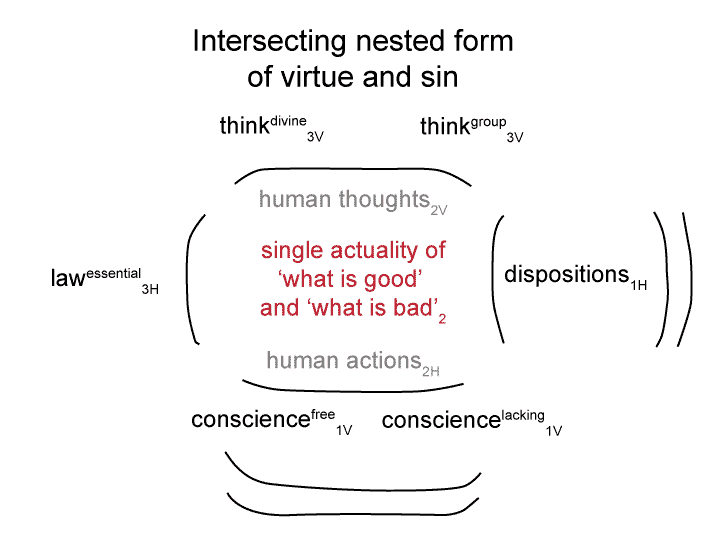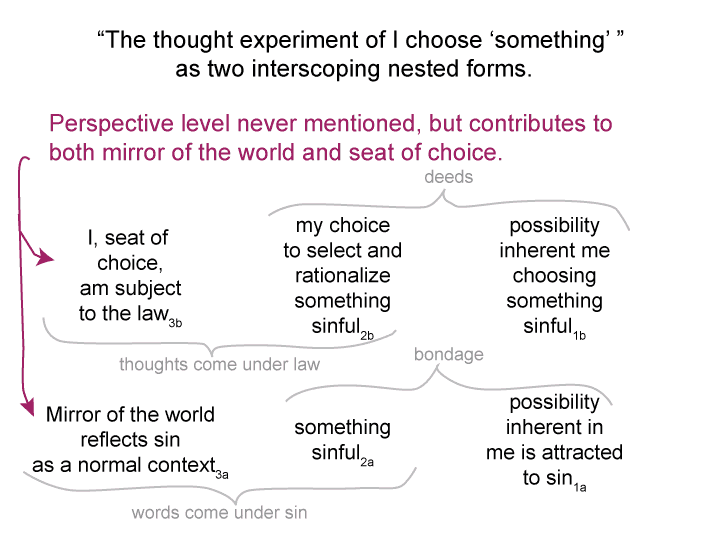Man and Sin by Piet Schoonenberg (1964) 2.3 SX
[IF the narrow confines of words and bondage never inspire the person to say: “This is not my choice. Or maybe, this is not my desire.”
THEN everything but the heart is swept into the drama.
The interscope still applies. Values1b cohere to desires1a.]
Man and Sin by Piet Schoonenberg (1964) 2.3 SW
Summary of text [comment] pages 83 and 84
Schoonenberg quoted John 8:31-35 and summed up as follows:
The heart the whole person is free only when it is bound to God.
The heart remains a slave when in sin.
[What does this imply?
Is a person not whole until they have a heart?
A broken heart?]
Man and Sin by Piet Schoonenberg (1964) 2.3 SV
[In the intersection, words3H(2, thoughts3V(2, deeds2(1V)) and bondage2(1H)), all share one actuality: the heart2.
So I can imagine that …
… law corrupts the normal context of I, seat of choice3V.
… sin corrupts the normal context of ‘the mirror of the world3H’.
… death begins when both sin and law corrupt the heart2, the single actuality that is my choice2V and something that situates my potential2H.
Sin and law are vectors.
Death is the symptom.]
Man and Sin by Piet Schoonenberg (1964) 2.3 ST
Summary of text [comment] pages 83 and 84
[Schoonenberg’s terms, sin, law and death, also apply to the single actuality generated by the fusion of my choice2V and somethingactual2H. They apply to the person’s heart. They may be modeled by an intersection.]
Man and Sin by Piet Schoonenberg (1964) 2.3 SS
[So maybe there is a clue to death in the interscoping form.
Repetition disorders both consolidate the gains made by death and block further progression towards death.
The interscope consolidates gains.
The intersection prevents further deterioration.]
Man and Sin by Piet Schoonenberg (1964) 2.3 SR
Summary of text [comment] pages 83 and 84
[What about death?
Death could pervade the interscoping form as a repetition disorder. Sins as words (content level) and laws as thoughts (situation level) seems to describe exactly that.
Repetition disorders were accounted for, in Freudian psychoanalysis, as a death wish. In contrast, Jung saw them as actions standing in the way of one’s demise.
Note how Freud and Jung contradict. Contradictions imply the intersection.]



